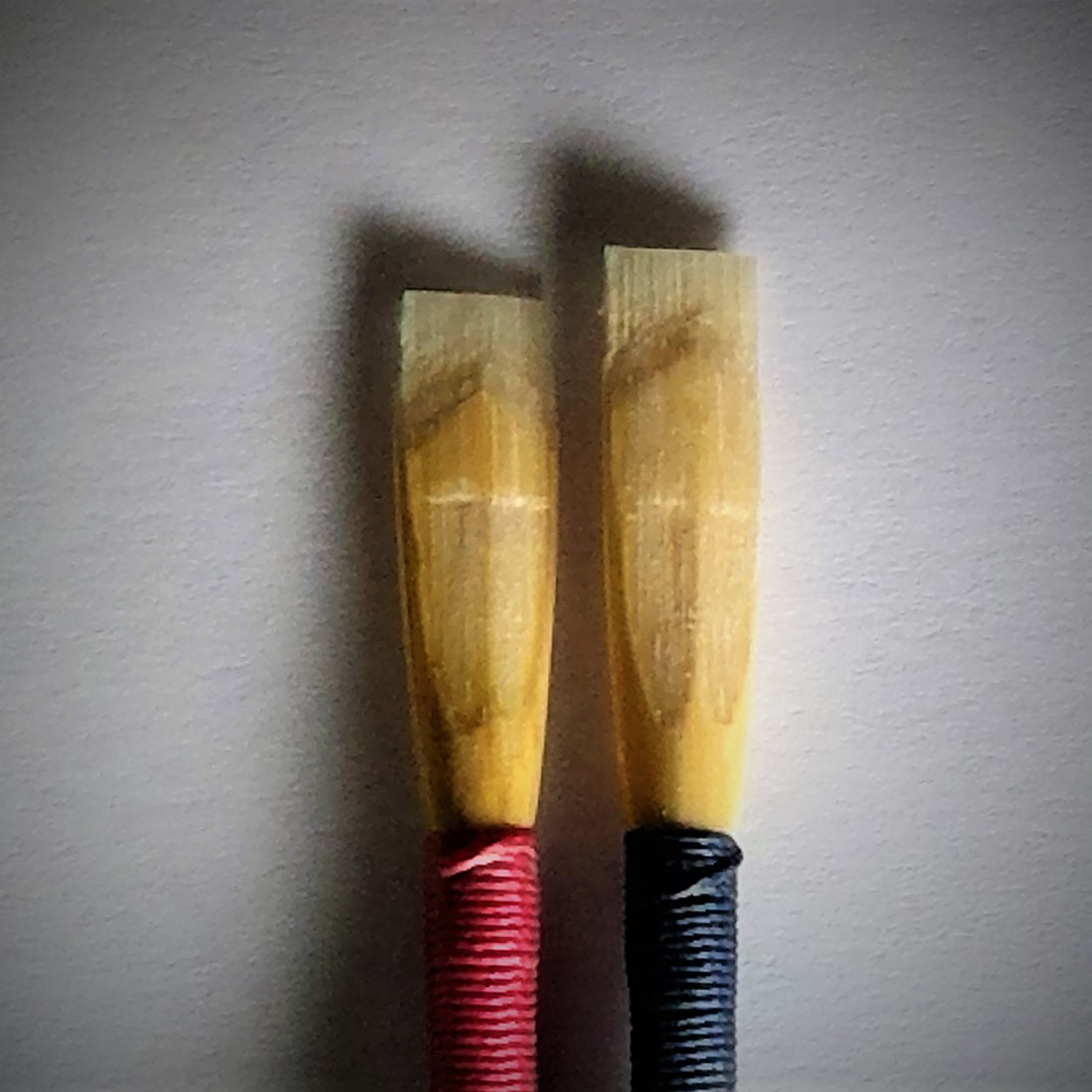When do I need a new reed?
It depends on a variety of factors. All the reeds used by woodwinds are made of an organic material whose properties vary piece to piece. That’s one reason reeds can be so different when they look similar.
In my playing, if I’m thinking more about the reed than about the music, I either need to fix the reed, or get rid of it. As a professional who makes reeds, I never play a reed more than about 10 hours and a 10-hour reed is really special. When you BUY reeds, you need different criteria.
Since I am making reeds all the time, if a reed is bad (stuffy, too open, too narrow, weak, too thick, too thin, unresponsive, etc.), I either fix it or get rid of it right away. In the picture is an old, ready to discard reed on the left and a new reed on the right. Like most oboists, I’ve been fixing my reed the whole time I'm playing it so the reed is shorter and thinner by the time I discard it. I’ve pretty much fixed it out of existence. (More on fixing reeds next time.) There is no sense in fighting with a bad reed. It wastes time and energy and just causes problems. If a reed is old, I get rid of it. I always have new reeds to play on.
Someone who doesn’t fix reeds can probably play on a GOOD reed about 20-25 hours before it stops vibrating.
Another key to when a reed needs replacing: If you think you have to “break in” a new reed, you are playing too long on the old reeds. There is no such thing as breaking in a reed. What’s really going on is you are changing your embouchure (the shape of your mouth on the reed) to get the old reeds to work.
What happens to a reed as it ages? The cane starts to break down. The reed loses it's shape, the tip flattens and the inside space of the reed gets narrower, the exposed grain fills with material from our mouths (I know, gross, but true.), and the cane becomes brittle, vibrating less and less easily. What do we experience? The reed will slowly get higher in pitch, become stuffy, and the response worsens and eventually the reed stop working on the lowest notes and large leaps from high to low.
Here’s the problem. As the reed ages, people tend to change their embouchure to compensate for any issues. And, as the reed stops vibrating, they must use less embouchure to make it work. So, when a new reed is introduced, they’re going to have to adjust their embouchure again to compensate. This compensation could be back to a good embouchure, but it could also be further from their original embouchure. BIG problem.
So, what’s the solution? Especially if you are just learning to play oboe, never play on a bad reed or a dead reed. Your embouchure will evolve less, and you’ll be able to concentrate on learning or playing, not getting your reed to work. And your skills will advance much quicker.
You can prolong the life of the reed if you can rinse the gunk from the surface (exterior and interior) and do some relatively easy scraping. You can even temporarily open the reed in a couple of ways. But the cane will become more brittle and disintegrate after about 25 hours. (Don’t quote me on that time limit, I am guesstimating. It depends on the cane, the reed’s construction, and other factors.)
If you are buying reeds, the best practice is to have three or four good reeds in a rotation, plus one or two older reeds set aside for emergencies. Rotating reeds makes them last longer. It is tempting to keep playing on a reed you’ve fallen in love with, but it’s still going to die in time. Make sure you always have a reed that’s relatively new to play on in the rotation. Letting one dry out and sit for a day or two while you play other reeds extends it’s life, just remove the oldest reed from the rotation when you start playing a new one.
In my next newsletter, I’ll go over some simple ways to prolong the life of a reed.

